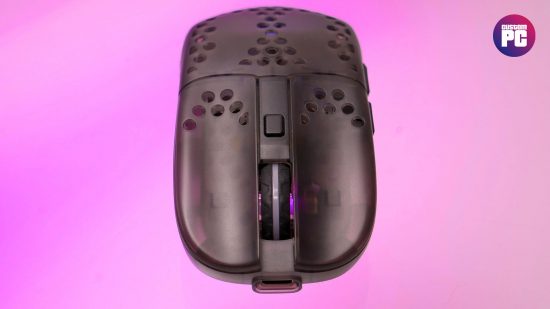Our Verdict
80%A fantastic wireless gaming mouse with a unique shape that's ideal for fingertip grip users.
The Cherry Xtrfy MZ1 Wireless is the wireless variant of a mouse designed by famed YouTube mouse reviewer Zy ‘RocketJumpNinja‘ Rykoa. It sports a unique shape that’s very low, with prominent finger grooves running two-thirds the length of the mouse. It also offers top-tier sensor performance, 75 hours of battery life, and includes adjustable weight balance and a swappable back plate to tweak the shape of the mouse.
Cherry Xtrfy MZ1 Wireless shape
Thanks to modern mouse sensors and switches being so generally excellent, it’s often the shape of a mouse that is the biggest factor in whether someone likes or dislikes any given mouse, and the MZ1 perfectly exemplifies this idea.
Designed from scratch by Zy, the shape of the MZ1 is almost entirely unique among gaming mice, and it’s a shape that some users are going to love and others are probably going to hate.
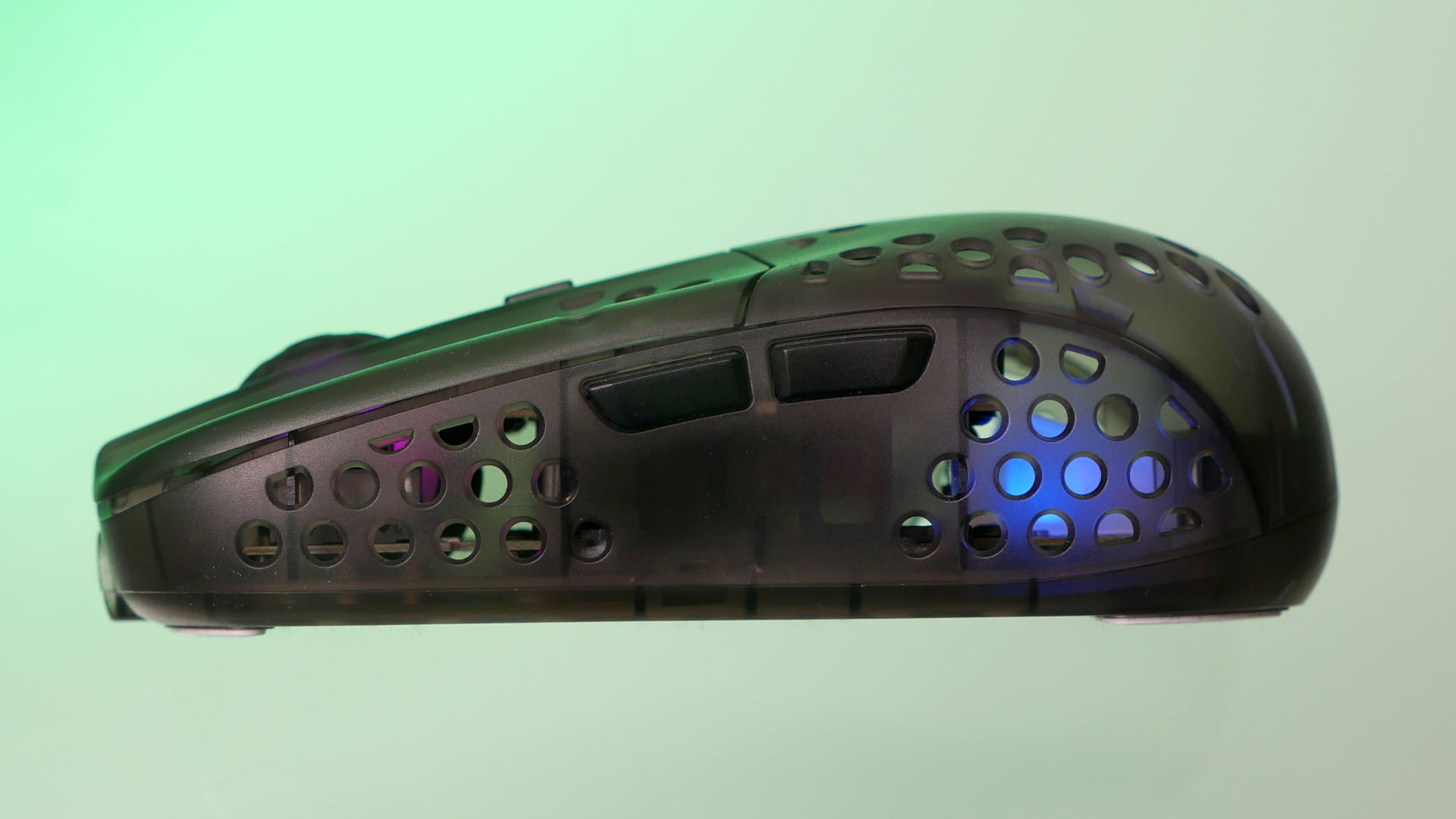
It’s incredibly low, with a maximum height at its rear of 36mm and a front button press-point height of just 18mm. That compares with a peak height of 39mm and a button height of 24mm for the relatively compact Logitech G Pro X Superlight. Zy’s logic here is that he found he aimed better on mice with low button heights so that’s what he used in his design.
The width of the mouse is more typical of other gaming mice, though still compact, with a max width of 59mm and a grip-point width of 56mm. Those measurements compare to 63mm and 59mm for the Logitech G Pro X Superlight.
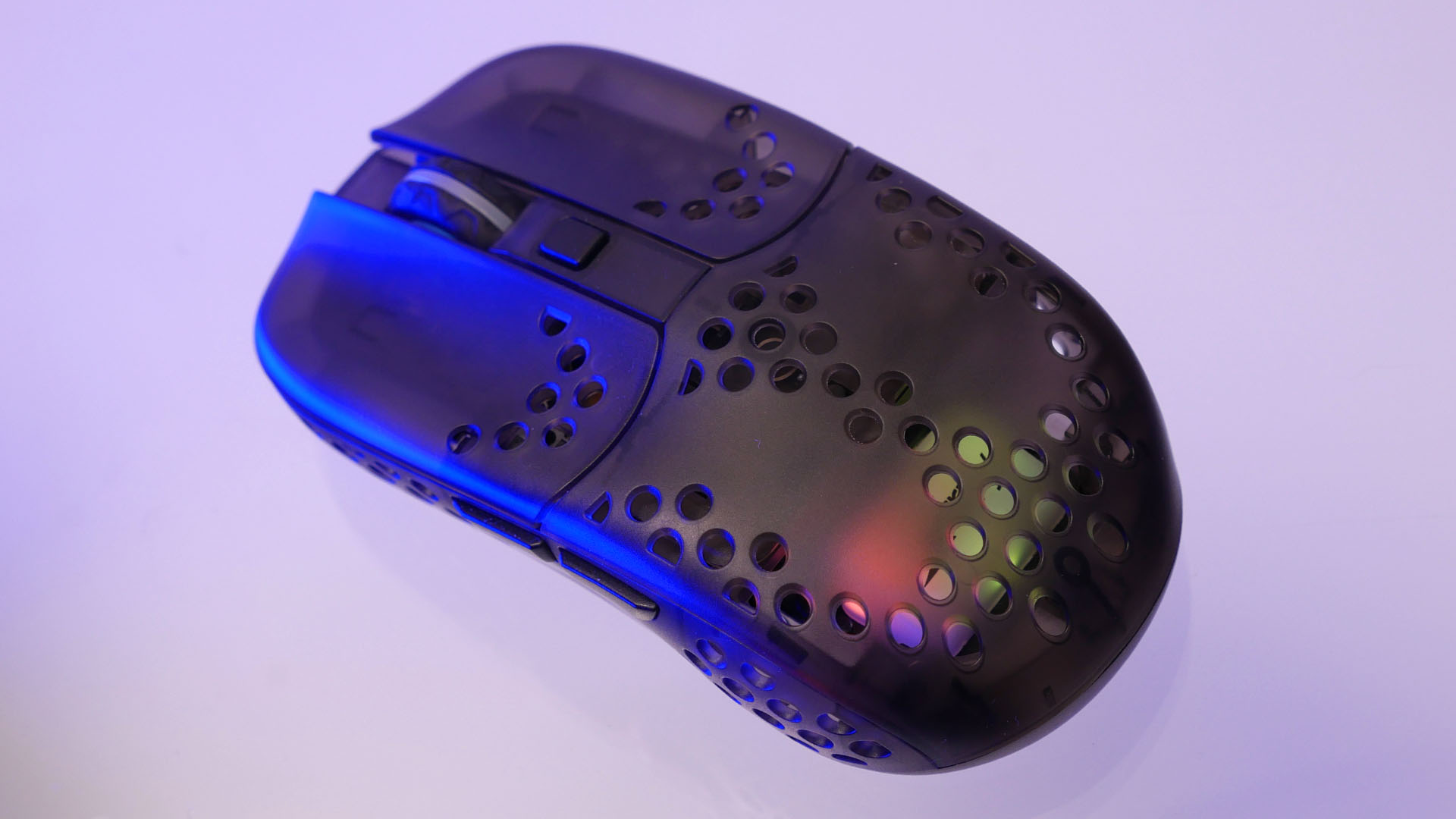
Another key part of the design is the deep and long finger grooves in the top of the mouse. Having slight dips in the tops of mouse buttons to help center your fingers is quite common but the grooves here are far deeper and longer than most. The net effect is that your fingers are never left in any doubt where they are on the mouse, making you feel more in control and stabilizing your grip.
Nonetheless, the overall design of this mouse looks, on first impression, like it would just be uncomfortable, whatever grip style you use. After all, it essentially goes directly against the generally accepted idea that more comfortable mice are those that support your hand and fingers and help your wrist to sit in a more upright position.
However, in practice, the design works amazingly well. For pure fingertip grip use, gripping only the sides of the mouse, the overall compact shape means there’s loads of room under your palm to move the mouse around while the finger grooves again really help in keeping your grip secure, despite the relatively slim sides that have no rubber or soft-touch finish to aid grip.
Meanwhile, for other grip styles, the mouse also works surprisingly well. For claw grip where you rest the base of your palm on the rear of the mouse, it works but is only usable if you have quite small hands – the fingers of my 20cm long hands (from wrist to tip of middle finger) land 3cm in front of the mouse, using a claw grip.
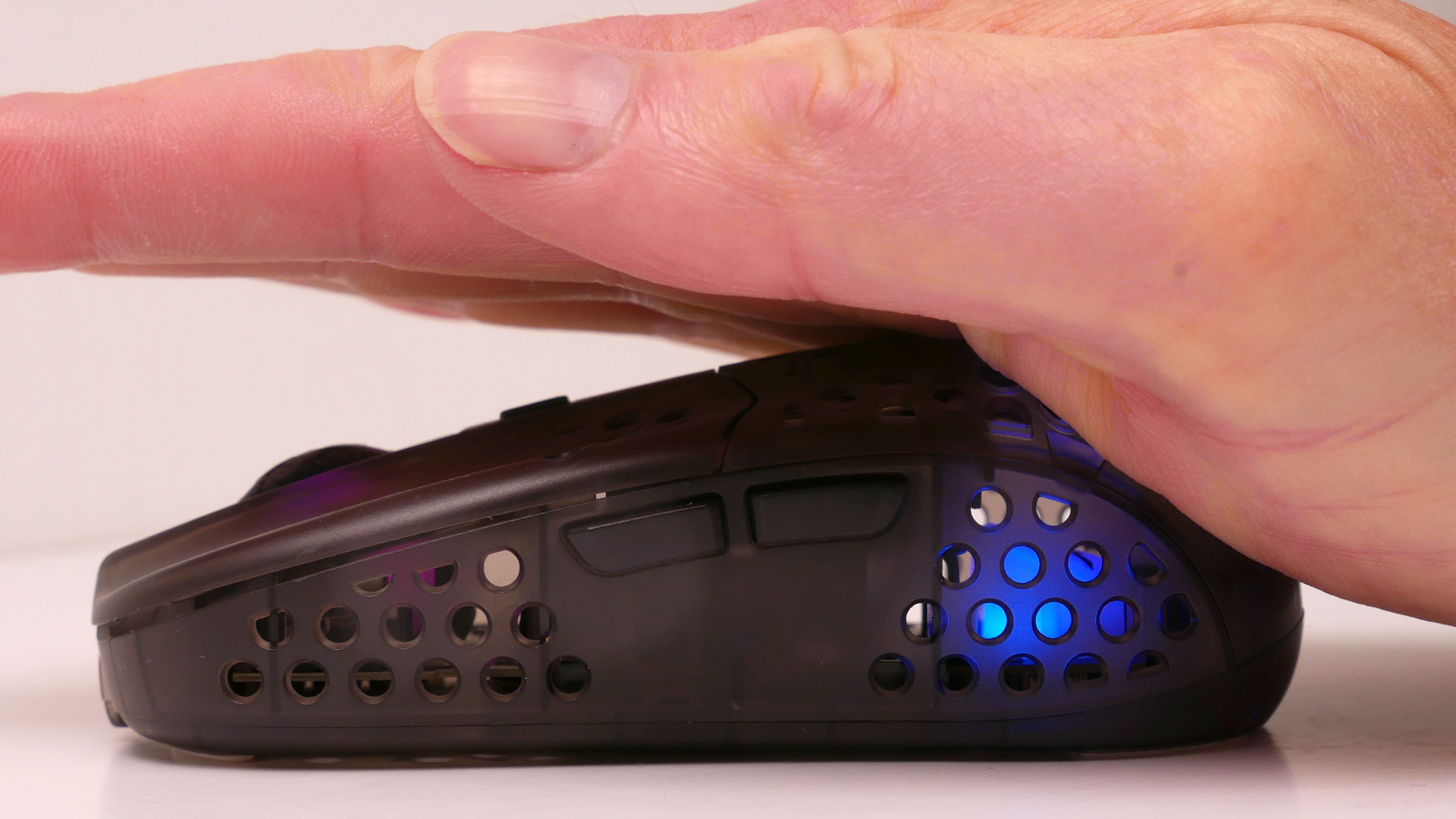
Using a conventional palm or claw grip the mouse feels too short
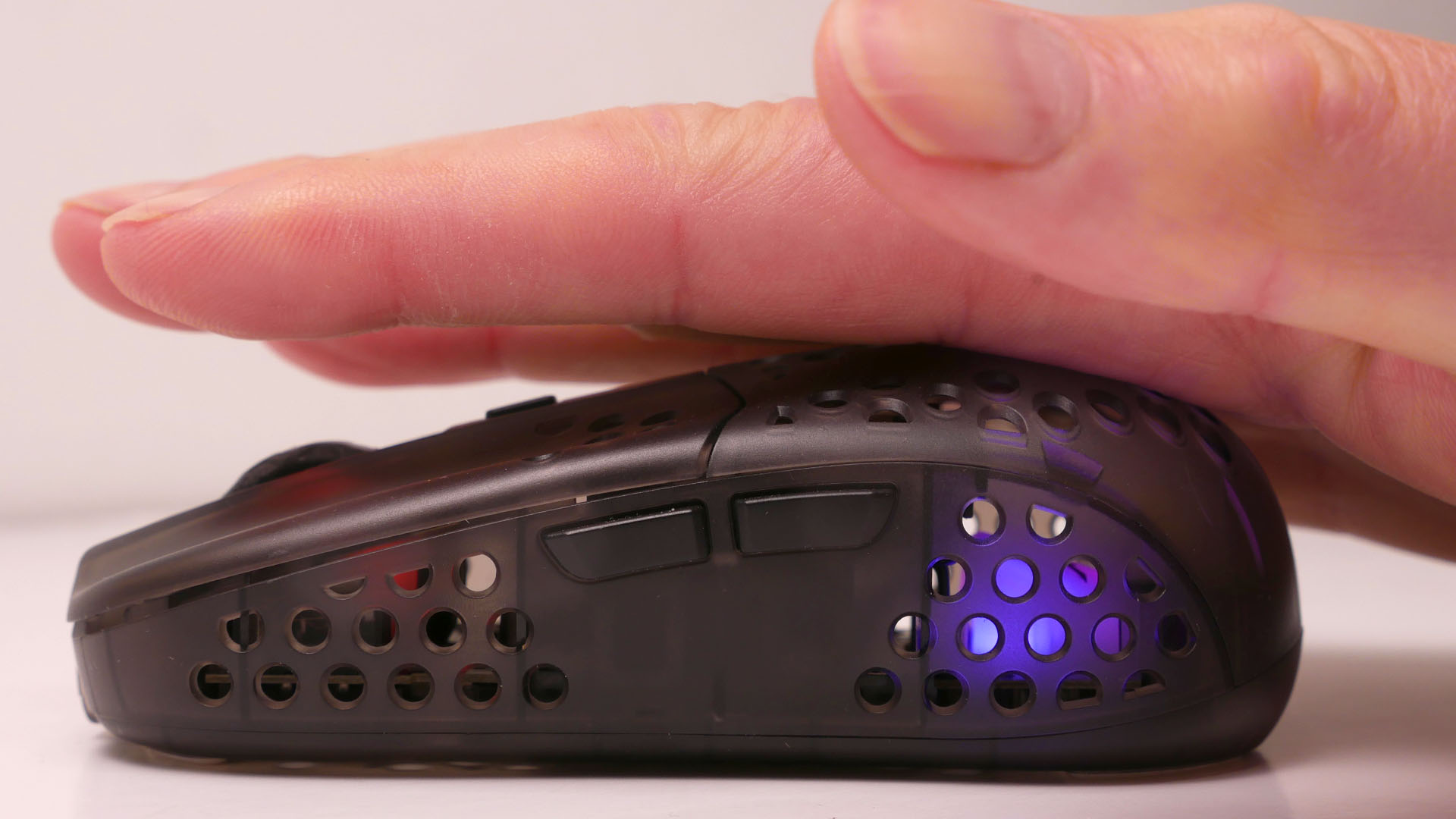
But resting the base of your fingers on the back of the mouse feels right
As for palm grip, it doesn’t quite suit a conventional palm grip – where the peak of the mouse rests in the meat of your palm – unless you have quite short and narrow hands. Again, my fingers stretched well beyond the front of the mouse when trying to hold the mouse in this way.
The really interesting thing about this mouse shape, though, is that it essentially creates a new grip style that’s a hybrid of all three other styles. The high but short rear section lets you rest the base of your fingers on it and control the mouse movement in a manner akin to claw and palm grip, leaving your fingers free to float above the mouse. But then it’s also effortless to switch to more of a fingertip grip when needed, without fundamentally moving your hand position. Combined with the low-slung shape, it makes for a surprisingly relaxing mouse to use.
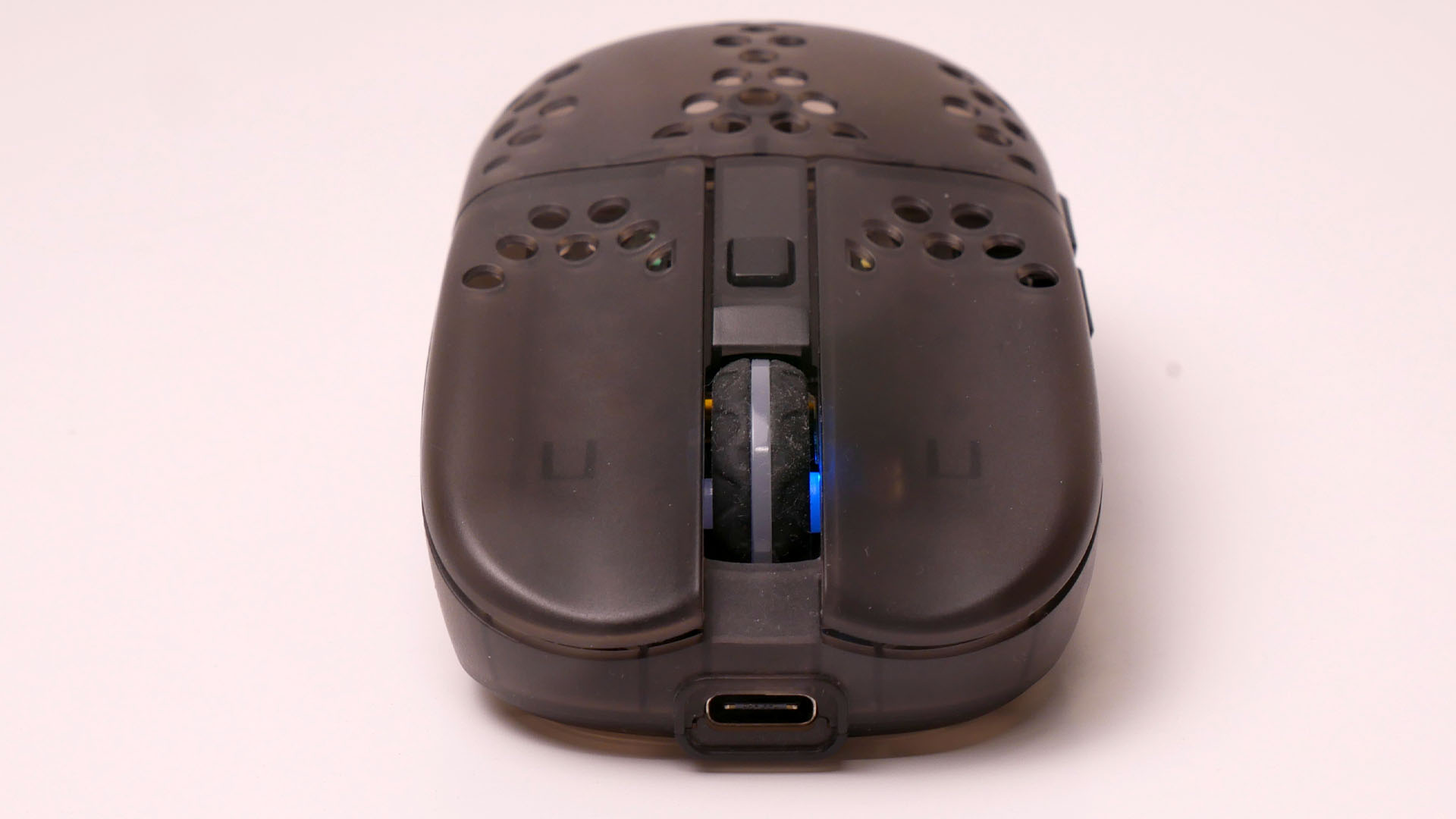
There are some caveats, though. The mouse is generally too narrow for a three-finger grip (ring finger on right mouse, middle finger on scroll wheel) unless you have small hands. The right side is also a little cramped if you’re trying to use a two-finger grip and are resting your ring and little fingers on the side of the mouse.
When it comes to weight, this mouse isn’t the absolute lightest wireless mouse available but it’s certainly one of the lightest. The Cherry Xtrfy MZ1 Wireless weight is 62g. That compares to 63g for the Logitech G Pro X Superlight. When combined with the generally excellent handling of this mouse, and of course the lack of a cable to get in the way, this makes for a mouse that’s effortless to fling around in the heat of battle.
Cherry Xtrfy MZ1 Wireless modular shell and weight balance
Surprisingly, for a first attempt at a gaming mouse, Zy and Xtrfy have managed to fit in two customizable elements to the MZ1 design. The first is that the rear section can be removed (by undoing a screw on the base of the mouse) and swapped for an even lower back section. The lower section is even more suited for a fingertip grip, where you don’t want any of the rear of the mouse to touch your hand. However, we tended to prefer the default back as it allows for the more relaxed grip style described above.

The default Cherry Xtrfy MZ1 Wireless back
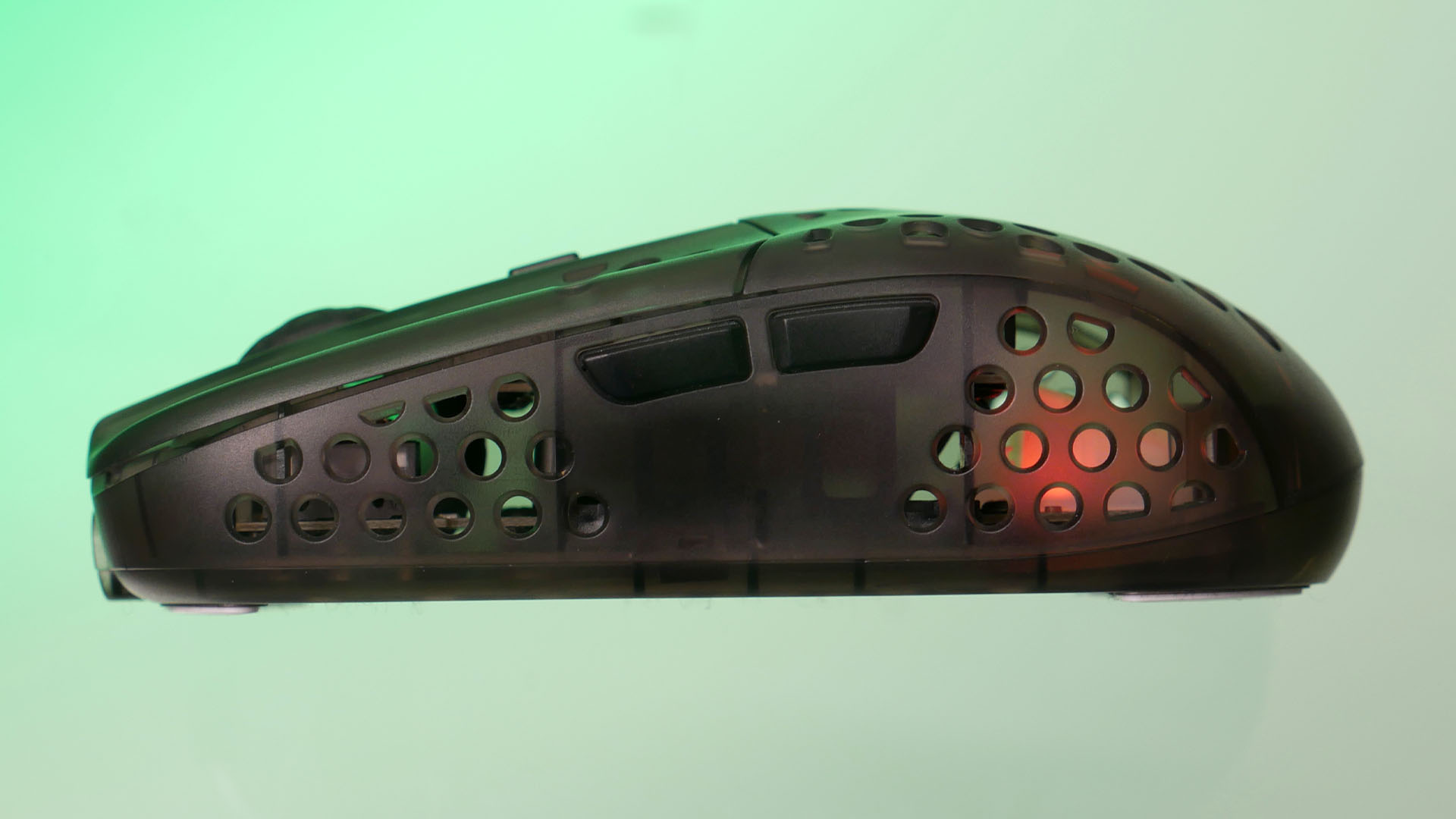
The alternative Cherry Xtrfy MZ1 Wireless back
Also customizable is the weight balance of the mouse. Two further screws on the underside can be loosened to allow a left-front and a right-rear piece inside the mouse to be slid forward and back. Combined, these two movements let you fine-tune the front-to-back and side-to-side balance of the mouse. We didn’t find a need to adjust these though, enjoying the default balance of the mouse.
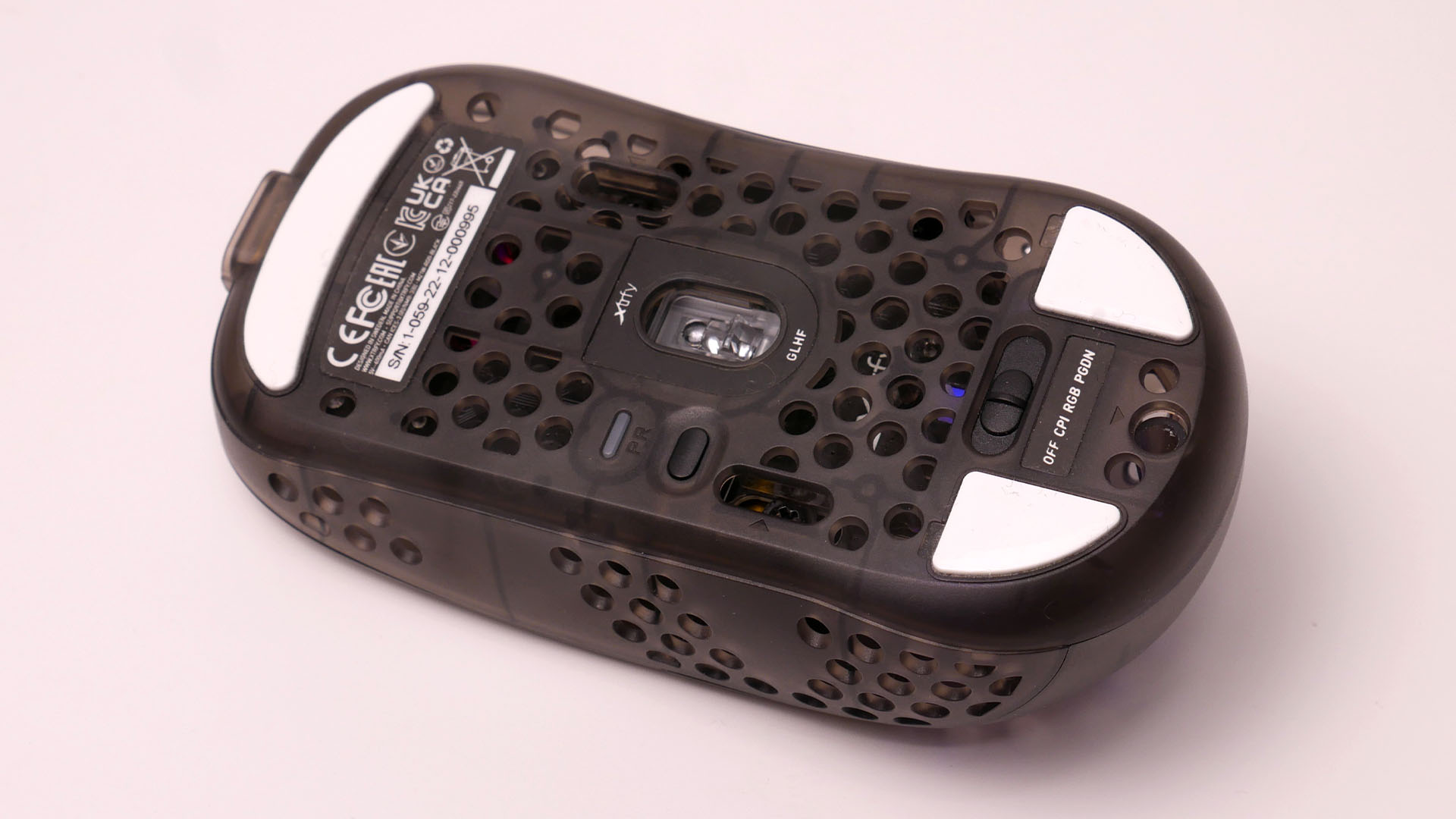
Cherry Xtrfy MZ1 Wireless design
Along with its shape, the design of the MZ1 is intriguing thanks to the inclusion of both the modern trend for putting lots of holes in the outside of the case to save weight and for it using translucent plastic. The overall effect is a mouse that looks a little messy to our eyes, particularly when the RGB lighting is on.
Like some of Roccat’s recent mice, such as the Roccat Kone Air XP and Roccat Kone Pro, the choice of a single RGB lighting zone hidden under the translucent case makes for a rather undefined, fragmented look. That said, we do rather like the way you can glimpse through the case holes the Xtrfy logo on the rear RGB lighting zone. Also available in a translucent white, we can’t help but wonder if the translucent effect works a little better on that lighter color.
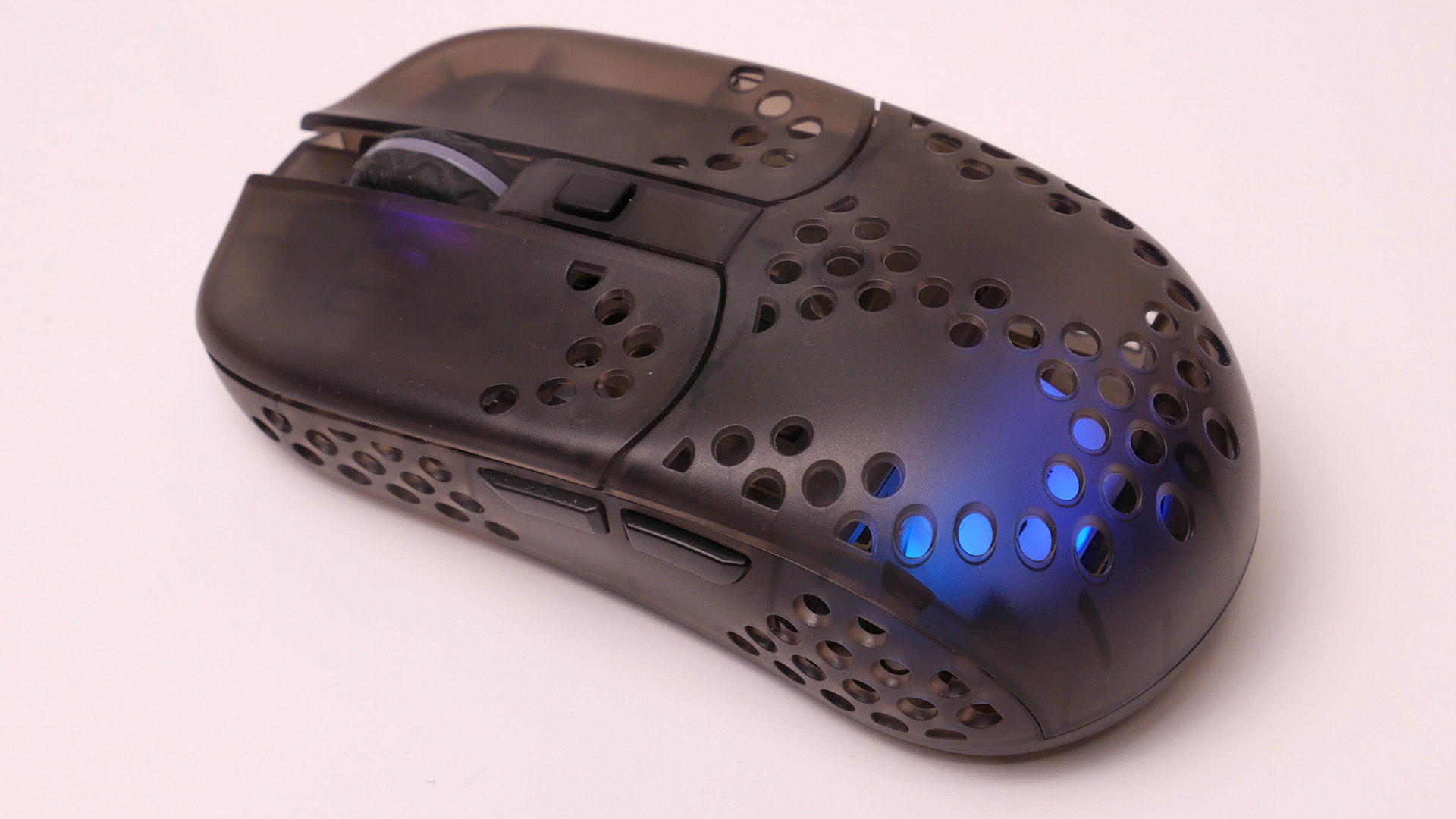
If, like us, you’re not entirely won over by the look of this mouse, you’ll be glad to know you can customize it if you buy direct from Xtrfy’s store. You can add blue, pink, purple, cherry red, forest green and retro brown top shells ($5 each) to either of the black or white bases – the pink and purple look rather fun, from what we can tell.
You can also opt for glass feet/skates ($27.50), instead of the otherwise excellent Teflon skates, as well as add grip tape ($15) for the left and right buttons.
Cherry Xtrfy MZ1 Wireless buttons and controls
The MZ1 has a symmetrical shape but doesn’t include buttons on both sides of the mouse, so it isn’t truly ambidextrous. As for other extra buttons, you get a single DPI-switching button on the top, just behind the scroll wheel, and that’s your lot for up top. The DPI button is easy to reach when needed but we never once accidentally pressed it.

Flip over the mouse, and there are a surprising number of extra buttons and switches. On the left is a button with an LED above it, and this is used to cycle through whatever setting you’re currently adjusting, with the default being the polling rate of the mouse. Then, at the back of the mouse is a slider switch that turns the mouse off or selects from either CPI/DPI (makes the top button change DPI/CPI and the bottom button change polling rate), RGB (uses a combination of buttons to program the RGB lighting without software), or PGDN.
The latter option changes the top button to trigger the PGDN button so that you can program your games to trigger whatever function you want when the PGDN button is pressed. This setting also allows for various button combos to adjust lift-off distance and debounce delay (the delay between a button being pressed and it actually firing off a ‘pressed’ signal) so you can really fine-tune how the mouse responds, all without software.

It’s quite an impressive array that takes a bit of learning to figure out how all the settings work, but there’s a clear enough manual on Xtrfy’s website and in the box. Plus, the default CPI mode means the mouse works like most others, if you don’t want to mess around with customization to start with.
Cherry Xtrfy MZ1 Wireless sensor
The ZM1 uses a PixArt 3370 optical sensor, which is a proven sensor used in the likes of the Mountain Makalu Max. Its peak DPI of 19,000 along with 50G max acceleration and 400 inches per second max speed all helped ensure this mouse performed flawlessly in our tests. In games it provided accurate tracking during the wildest movements we could muster, and for precise desktop work such as tracing objects in Photoshop, it copes with that too.
Cherry Xtrfy MZ1 Wireless battery life and wireless
According to the manufacturer, the Cherry Xtrfy MZ1 has a battery life of 75 hours between charges, and that translates in our experience to at least a week of use between charges when using the mouse as a daily work driver and for a couple of hours gaming per night.
What’s more, the mouse charges fairly quickly using the USB-C connection on its front, and the lightweight braided cable still offers a great experience when plugged in – it provides minimal pushback and adds a minimum of extra weight to the front of the mouse.
The 2.4GHz wireless connection also worked flawlessly in our tests, showing no signs of any extra latency or unreliability compared to a wired connection or other top-tier wireless mice.
Cherry Xtrfy MZ1 Wireless pros and cons
Pros
- Brilliant unique shape
- Great for fingertip grip
- Very light
- Excellent overall performance
- Surprisingly customizable
Cons
- Divisive shape
- Not ideal for claw and palm grip
- Not ideal for larger hands
- Quite expensive
Cherry Xtrfy MZ1 Wireless specs
The Cherry Xtrfy MZ1 Wireless spec list is:
| Weight | 62g |
| Dimensions (mm) | 59 x 111 x 18-36 (W x D x H) |
| Sensor | PixArt PAW3370 – optical, 19,000 DPI, 50G acceleration, 400IPS |
| Switches | Kailh GM 8.0 |
| Buttons | 6 (left, right, middle/scroll, forward, back, 1 x top DPI) |
| Cable | 1.8m USB-C, lightweight braided |
| Battery life | 80 hours |
| Extras | USB-A to USB-C cable, USB-C to USB-A adapter, USB-A wireless dongle, screwdriver for backplate and weight adjustment, alternative backplate, buttons for changing settings on the underside |
Cherry Xtrfy MZ1 Wireless price
The Cherry Xtrfy MZ1 Wireless price is $132, making it quite expensive, even for a wireless model, though its UK price of £99 is more competitive.
Price: Expect to pay $132 (£99)
Cherry Xtrfy MZ1 Wireless review conclusion
The Cherry Xtry MZ1 Wireless is a fantastic gaming mouse that delivers excellent sensor, wireless, and button performance along with some clever customization options. It’s quite expensive but in line with several other premium wireless gaming mice.
The unique fingertip grip-focused shape of this mouse feels less universally appealing than the likes of the Logitech G Pro X Superlight, but if it works for you you’re going to love it, which is why it’s our new best wireless gaming mouse for fingertip grip.
For more mouse recommendations, check out our best gaming mouse guide. Meanwhile, if you own the MZ1 or MZ1 Wireless, we’d love to hear your thoughts on it. Just get in touch via the Custom PC Facebook page, Twitter page, or by joining our 390,000+ member Custom PC and Gaming Setup Facebook group.
